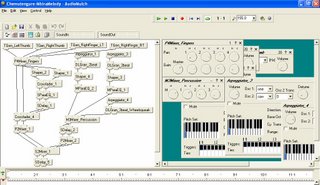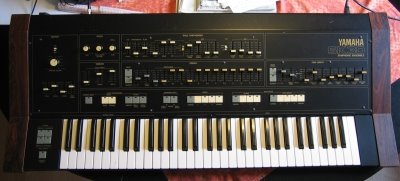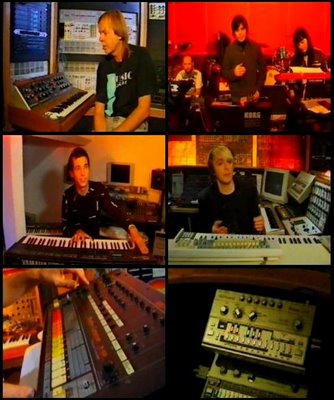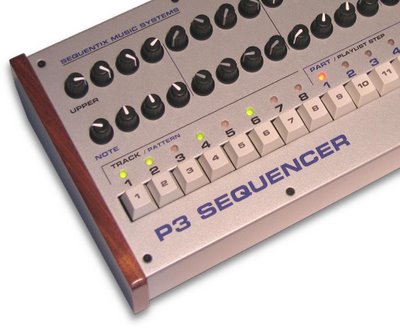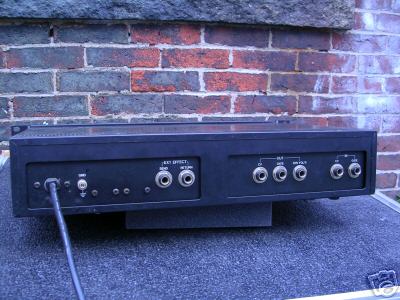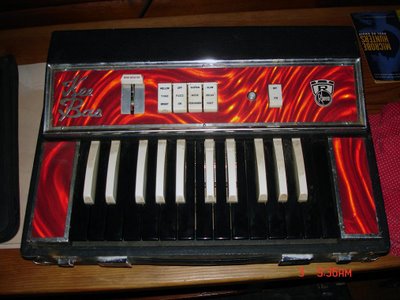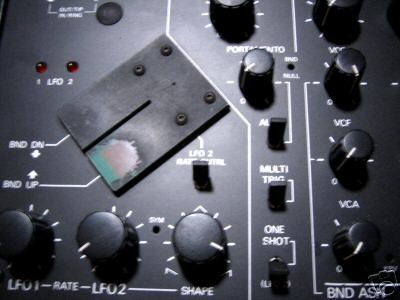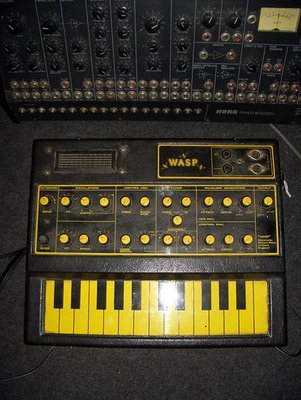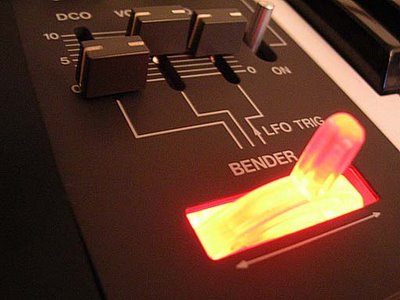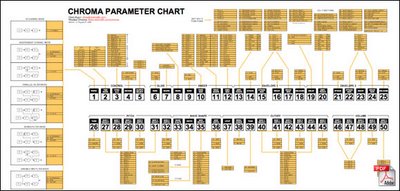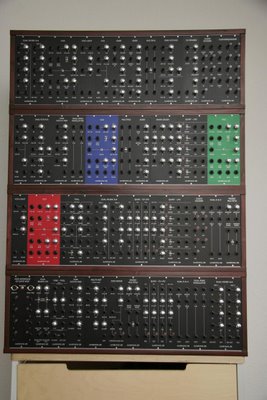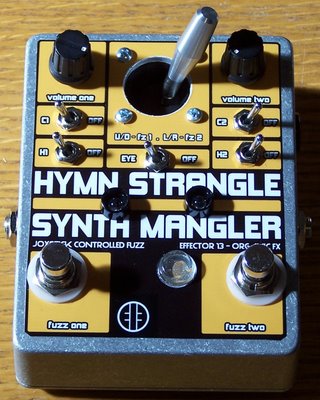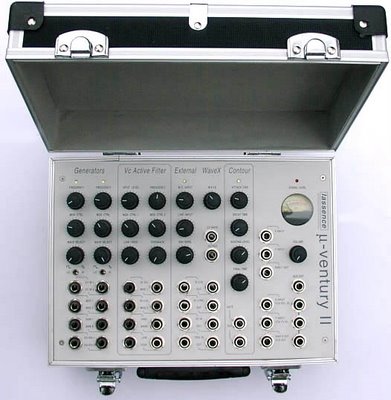
Anyone know what happened to the Lassence uVentury II? I remember when it was first announced. Frederic sent me a link to the Lassence uVentruy II page
on Gearjunkies. I did a quick search and found this detailed article
on Sound on Sound, dated May '03. Both the SOS article and Gearjunkies page links to
www.bluebay.be which now appears to be a data warehousing and business intelligence company.
If anyone out there has one or knows more please feel free to comment. I'm curious to how they sounded. It's a gorgeous looking synth.
Update via the comments (make sure to check out the other comments as well):
"OK,The lassence ventury II was made in 14 exemplaries + the prototype,all including the proto was sold.
It was totaly handcrafted,pots are alsp plastic conductive,but are of bad mechanicaly quality,the VCO's are stablebut only Volt/octave for a range of maximum 3.5 octaves (if you calibrate them)(none on the sold units where properly calibrated) Components and manufacture of prints and case was high-Q. Indeed the VU serve for nothing,and the Wave-X is poor,also the ADSR has a faulty thing,but can be updated just by adding one single resistor. The filter is SEM influenced.
Story: The unit was originaly designed that wy because the guy that have invest in the proto wants a tube-tech look. The project was abandoned. Untill X found a new interested distributor.
It went ok ,and units get starting manufacturing,but the death-end of shipping was to soon ,and the product wasn't througfully tested,thats why problems with pots,adsr,wave-x and,not calibrated!
On top of that meanwhile some units where 'fixed' the distributor absolutely want to send a unit for review to s.0.s,...this was the death before the unit was born!
Retail price was way to high because the machine was totaly hand assambled + the bad s.o.s review..... the last 4 units where sold for only 600$ (i buyed 2 of them,been close friend to the guy who's buit them,i fixed them very quick)(any unit can be turn into a very nice reliable machine just by changing all pots,fix the adsr,and tune the vco's 1v/oct.)
In fact the modules where available since years already,the guy was an ex-ACME member in 80ties and then at that period they where distributor for the digisound brand . We have sale a lot of modules in early 90ties untill our huge curtis stock was empty At huge demand the complete set was completely re-designed using discrete components.
Most of our systems where sold to the country's techno underground scene that use them in there live acts,all always made completely custom on special orders. It had created a very closed entourage almost a myth as manny people want them but not could reach the builder any way,as everything was keept secret by the scene. Untill it was time ('i' think it was time,that these deserve more respect). So i/we decided to re-launche them 'properly' and start to manufacture them like beatufull modules of other brands.
The basic set is complete.
DUAL VCO/LFO
DUAL ADSR
MULTIMODE 12db VCF
24db VCF
DUAL VCA
DUAL Ring Modulator
8-step sequential voltage source
quad VCO/LFO
Wave multiplier (this kills now! it sound identical to the serge middle section,thougt ofcourse
electronic design is different.
Still available
CEM 3340 VCO (if u supplie the cem)
Buzzy Project
Sequencer
High-end vco (v/oct. at wide span)
All modules are at same pitch off MOTM.etc so you can easy fit them together.
These modules 'sounds' or better what you can do with it,is very different
compared to other vintage or commercial products.
They where basicaly intended to create 'alien-like' new sound sculptions,and not to
use them to play do,re,mi,fa,so...Ofcource you can.
the in and outputs are very high,you can do extreme feedbacks and modulations between modules.
I have try lot of modulars,we have client that have an MOTM,MOOG,and our new modules...
If i know how i can post a pic here,i can present soon exclusive for matrixsynth
the the proto...and finaly eventualy sond files
see u l8r alig8r"
In a while crocodile. Thank you!
 Via Paul Sop, aka Doktor Future:
Via Paul Sop, aka Doktor Future: